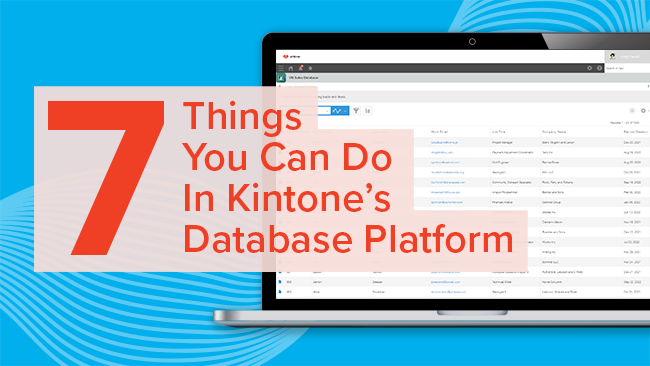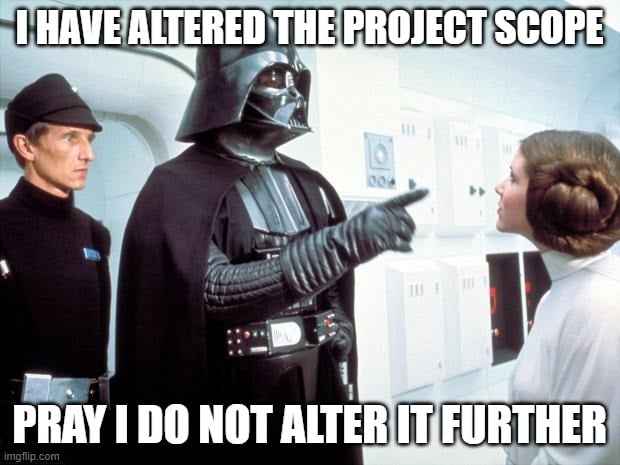Guest post by Steve Johnson, Under10 Consulting
The road to hell is paved with good intentions. —Saint Bernard of Clairvaux, French abbot of the reforming Cistercian order
People who design product processes have the best of intentions. They want to ensure all the stakeholders are heard and that the results are in line with the company’s goals. But often those best intentions result in overbearing processes that require company-wide participation and assume perfect information.
You’ve seen it. Processes that require development estimates with precision down to the person-day. Processes that require the sales team to sign up for projected revenues.
It started simply enough.
In the early days we agreed to deliver a set of functionality. The company heads were all in the room when we made the decisions. Yet, as with any project, we defined some pretty aggressive goals. We assumed the requirements were fixed and the team would work as many hours as necessary to get it all done.
But then the project was delayed. And delayed again. And when the project was finally delivered, some major pieces were missing.
It seems that the team delivered most of what we had agreed but lots has happened since then. An exec had a new idea; a sales guy needed a feature to close a deal; one of our lead developers left for a better opportunity; the bug count was higher than expected.
We realized we need to document much more than we did originally. First someone proposed a marketing requirements document, someone else suggested a product requirements document, and someone else added a feature specification document. Not sure what to do, we did all three!
So now, before we can start a project, we’ll need to have an MRD, a PRD, and an FSD. It seems at the end of every project, someone has an idea for a new document: a roadmap, a status report, a dashboard.
What's next? The product managers and developers will start complaining that they’re spending more time writing documents than they spend developing and delivering products.
That's a sure sign your process is getting in the way of your delivery.
Take charge
If you can't describe what you are doing as a process, you don't know what you are doing. —W Edwards Deming, quality expert
What collection of artifacts provides clarity to the product team while also satisfying your leadership team that the project is on schedule, meets the needs of the business, and aligns with their strategic vision? We need more than a cocktail napkin but less than a ream of paper.
A product playbook leverages the idea of product objects; living documents that are created, kept current, and referenced throughout the development life cycle. You’ll refine these documents over time. You’ll make changes as you learn more about the market, their problems, and your solution.
DEFINE the market opportunity and business leverage
We typically start with a product idea—or at least a problem we want to solve. But before you get into the details of the product, you should evaluate the viability of the market opportunity and our business leverage to achieve it.
At the core, we have to answer some fairly simple but critical questions: What market do we plan to serve? How big is it? Does this market look to us to solve these problems? Do we have business resources, experience, and presence to be successful in this market? We need to make a go/no-go decision on the feasibility of our firm entering this market with this product idea.
This is the area where we’re trying to solidify problem-solution fit.
Companies rarely have too few ideas so we need to make sure we’re applying our limited resources to the idea with the most potential for our organization.
DESIGN the product and its promotion
Assuming we have the go-ahead, we can now describe the product offering’s capabilities and how we’ll deliver our solution to market. What features should be delivered in what timeframe? Which items are most important? And what do we need to do to tell people about the product when it’s ready?
This is the area where we’re trying to deliver on product-market fit.
Recognize that we’re still working with assumptions that must be tested. Nothing we do here is set in stone. The design phase is highly iterative—we’ll refine our design decisions as well learn more about the problem and get feedback on our proposed solution.
DELIVER to market with sales and support
Next we'll leverage our sales and service channels to get the product into the hands of our customers. For a complex product with a direct sales force, it’s likely we’ll need to do some product training for the sales people and sales engineers. We’ll need some sales enablement tools. We may need to supplement our software with installation and implementation assistance as well as product training for the users. We'll need to ensure the market-facing teams have what they need or else they'll hound product management and marketing for continuous sales support.
REFINE based on results
Periodically we need to evaluate our results. This is often where a lot of teams drop the ball. What have we learned since introducing the product? Are we achieving our business and market goals? Do we have the right features? Is our messaging resonating with buyers? Is the pricing right? Have we sent the sales people out to talk to the right customers? Based on feedback from the market, how should we refine our offerings and our messaging?
Designing the product offerings is the primary focus in many companies but we really need to look beyond the software or hardware or services to the entire product process from idea to market.
Managing technology products is more than just simplistic customer discovery and minimum viable product. You need a nimble process.
If your team can't quickly explain your process, it's time to define a new one.
Contact Kintone to find out how you can transform your product development and go-to-market process with rapid, agile and centralized workflow tools.
About the author
 Steve Johnson is a recognized thought leader and storyteller within the technology product community. At Under10 Consulting, he helps product teams implement the latest methods for today’s business environments.
Steve Johnson is a recognized thought leader and storyteller within the technology product community. At Under10 Consulting, he helps product teams implement the latest methods for today’s business environments.
About the Author
Nicole is Director of Marketing at Kintone, with 10+ years experience in content strategy, campaign management, lead acquisition and building positive work cultures of empowered, purpose-driven team members. She spent seven years as a journalist, previously serving as a CBS San Francisco digital producer, NPR contributor, Patagon Journal deputy editor and reporter for several publications, including the Chicago Tribune. She's passionate about the tech for good space, social entrepreneurship and women leadership. On the weekends, you’ll likely find her putting her Master Gardener skills to use in at community gardens in Oakland.










